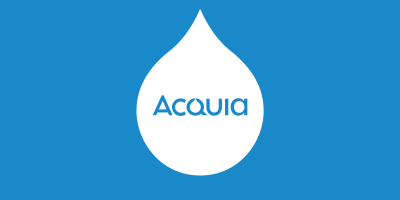The Power of Inclusive Marketing: How DAM Supports Diverse Representation

Today, the call for diversity, equity, and inclusion (DEI) is stronger than ever. It's echoing across industries and regions, reshaping how businesses operate. People are pushing DEI to the forefront, influencing how companies talk, create, and interact. Everywhere we look, from board meetings to community events, there's a demand for genuine representation. Whether young or old, of any gender, ethnicity, or nationality, people want to see themselves in the products they buy, the shows they watch, and the stories they believe in.
This change isn't just about doing what's right. It's also smart for business. When brands connect with the many backgrounds of their customers, they build stronger loyalty, earn trust, and reach more people. It's not just about showing diverse faces, but telling stories that speak to different experiences and viewpoints.
But with this change comes a challenge. As brands create more content, how can they keep track of everything? How can they ensure every ad or campaign is spot-on and represents their audience? This is where digital asset management (DAM) steps in. In 2022, with nearly $8 billion spent on digital advertising, the need for a tool to manage this ocean of content became clear. But DAM isn't just about storage — it also helps brands stay true and authentic.
In industries like beauty, where visuals are key, this change is even more crucial. Today, over half of the women in the U.S. want beauty brands to be more diverse in their ads and stories. Diverse representation isn't just a nice gesture — it's good business.
For the beauty world, the future isn't just digital. It's about embracing diversity and inclusion, and using tools like DAM software to make sure every story shines.
The new landscape: Inclusive beauty
Inclusive beauty, a concept amplified by Fenty Beauty's launch in 2017, acknowledges the rich diversity of consumers. It transcends traditional demographics, catering to burgeoning markets like the $166 billion men's personal care market and the $2.5 billion Black haircare industry. It embraces every individual, regardless of gender, age, religion, skin tone, and skin type, and strives for diversity in all aspects — from advertisements to product formulations and packaging. It's about making beauty more accessible – treating diversity as a priority rather than an afterthought.
Inclusive beauty also calls for an expansive range of skin shades in product lines, reflecting the diversity of the world's population. Today's customers demand this representation, encouraging beauty brands to encompass a spectrum of tones in their offerings. The push for inclusivity thus extends beyond marketing into the very heart of product development and curation.
This industry shift is epitomized by Pat McGrath, who emphasized that every color in her makeup line works on all skin tones, saying, "It's so important to know that you're not left out." She also highlights the need for diverse model casting, pointing out, "Working with girls of every skin tone is so important...how do you even know what you can buy, what suits you, what's right for you?" Inclusive beauty represents the evolving, diverse world of beauty that cherishes each individual's unique appeal.
Sephora, a trendsetter in the beauty industry, mirrors the progressive strides toward inclusive beauty and DEI through its pervasive in-store and digital presences. Stocking minority-owned brands such as Pat McGrath, Danessa Myricks, Fashion Fair, Ami Cole, LYS Beauty, Tatcha, Tower 28 Beauty, and Laneige, Sephora cultivates a broad palette for its customers. It goes beyond product offerings, actively showcasing DEI commitments through a yearly progress report and events with organizations like NAACP and National CARES Mentoring Movement.
So, why is this shift spearheaded by Sephora of paramount importance? Because when a giant like Sephora moves, it creates ripples throughout the industry. Their steps toward inclusivity set a standard and challenge for other brands and retailers to match or exceed. The beauty industry is undergoing a profound metamorphosis, wherein inclusivity, equity, and representation are at its core. As Sephora paves the way, it reinforces the narrative that the future of beauty is intertwined with acceptance, understanding, and celebration of every hue, texture, and story. And in this new era, brands that recognize and honor this tapestry will not only thrive but redefine beauty for generations to come.
The content challenge in DEI beauty marketing
In the evolving landscape of the beauty industry, where consumers yearn for authentic representation, marketing leaders are confronted with a nuanced content challenge. Committing to DEI means that every product doesn't have just one standard asset. Instead, it requires multiple assets to appeal to various audiences:
- Volume and variation: The push for inclusivity means a significant increase in assets for every product. One product might need different visuals that demonstrate its relevance across diverse skin tones, ages, genders, or other attributes.
- Selection dilemmas: With this plethora of content, a subsequent challenge emerges: How do teams decide which photo or video to use and at which time? Making sure marketing content genuinely resonates with its target audience while maintaining brand integrity is no easy feat.
- Rapid turnarounds: Amid these complexities, the market's tempo remains relentless. Brands must consistently meet tight go-to-market deadlines for product launches and campaigns, all while juggling a vast array of diverse assets.
The increasing intricacies of DEI in beauty marketing need a robust solution to manage, streamline, and optimize the expansive and varied assets.
Harnessing DAM: Navigating DEI's content challenges
Digital asset management serves not merely as a storage solution but as a strategic asset. It's tailor-made to help brands navigate the challenges of inclusive marketing:
- Metadata mastery: Unlike basic shared folders, DAM systems excel in metadata management. Every asset can be labeled with extensive data, from who it represents to the related products or campaigns. If a marketing campaign demands content catering to a particular age bracket or shade range, DAM allows for precise, instant retrievals.
- Optimization and flexibility: DAM systems don’t just store assets; they ready assets for action. Depending on its destination platform, DAM systems automatically tailor content, ensuring consistency and quality across all channels.
- Insights for refinement: Beyond mere organization, DAM tools offer invaluable insights into asset performance across diverse demographics. With this data, brands can fine-tune their strategies, ensuring alignment with their varied audience.
A leading brand in the beauty realm showcases the potential of DAM in DEI-centric marketing. Leveraging Acquia DAM (Widen) as their primary hub, they adeptly manage everything from PR materials to an extensive product shade spectrum. As they grow globally, teams worldwide can effortlessly access, share, and launch consistent, inclusive content, setting a new standard in the beauty sector.
With DAM, beauty brands have the opportunity to create a more inclusive, authentic, and effective marketing approach that respects and celebrates diversity.
Key benefits of using DAM for content challenges
At the core of every successful brand is consistency. To achieve this, all teams need to access the same approved, up-to-date brand assets. A DAM system, such as Acquia DAM, provides a unified platform where marketers, salespeople, creatives, and partners can retrieve the same digital assets to build a consistent experience across all channels. This not only negates the risk of rogue assets damaging the brand's image but also fosters a unified vision of diversity and inclusion. These benefits also include:
- Consistency across teams: All departments — from marketing to sales — access the same updated, approved brand assets, ensuring a coherent brand experience at every touchpoint.
- Reduced rogue asset risk: Eliminates chances of outdated or misaligned assets going public, protecting the brand's image and reinforcing its commitment to diversity.
- Asset expiry: Customizable expiration dates ensure only current, brand-approved assets are in circulation.
- Granular permission controls: Ensure team members, from creatives to marketers, access only relevant assets, streamlining cooperation and upholding the brand's diversity focus.
- Metadata tagging: Assets are easily classified by specific attributes, such as audience or product line, facilitating faster asset retrieval and application.
- Automatic asset updates: If the primary file changes in the DAM system, every instance of that asset updates, maintaining brand uniformity across all channels and negating any chances of outdated asset use.
- Detailed asset data: Metrics like downloads, views, geolocation, and intended use offer insights to fine-tune marketing strategies.
- Tailored marketing: By understanding which assets click with different audience segments, brands can more effectively target their marketing efforts.
DAM systems act as guiding lights for brands during this transformative journey. With an array of features designed to tackle their unique challenges, DAM streamlines asset management, fosters collaboration, and ensures brand consistency. For beauty brands, it's more than just managing assets – it's about weaving a narrative that celebrates every facet of beauty.
Looking ahead: The future of DAM and inclusive beauty
As beauty brands aim to represent an ever-more diverse customer base, the volume and variety of digital assets will grow exponentially. It's essential for brands to manage these assets effectively to maintain brand consistency, meet customers' diverse needs, and uphold their commitments to diversity and inclusion. DAM systems offer an efficient way to manage these increasing complexities.
Looking ahead, the potential of DAM systems in facilitating inclusive beauty efforts is immense. For instance, AI-powered DAM systems could potentially auto-tag assets based on attributes such as skin tone or hair type, helping brands cater to specific customer segments more effectively.
As inclusivity becomes the norm in the beauty industry, leveraging DAM systems in diversity and inclusion efforts is not just an option for beauty brands — it's a necessity. Acquia DAM, with its robust features and capabilities, stands ready to aid beauty brands in their ongoing quest for inclusivity and diversity. Request a demo today.


